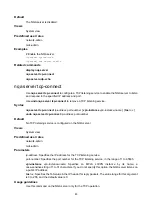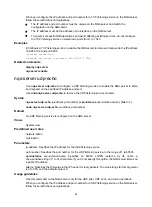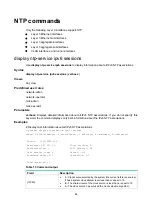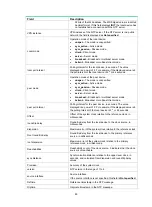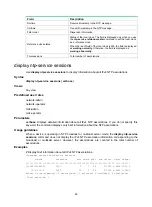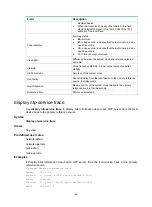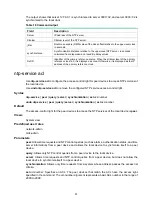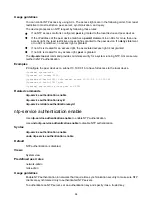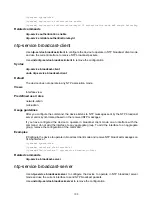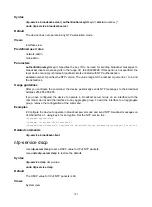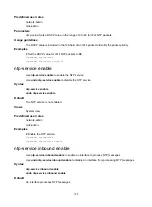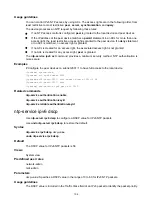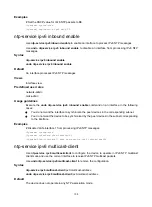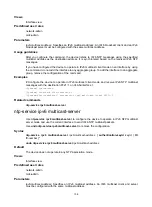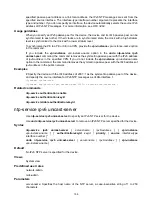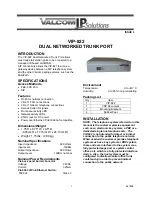
97
The output shows that server 127.0.0.1 is synchronized to server 3000::32, and server 3000::32 is
synchronized to the local clock.
Table 18 Command output
Field Description
Server
IP address of the NTP server.
Stratum
Stratum level of the NTP server.
jitter
Root mean square (RMS) value of the clock offset relative to the upper-level clock,
in seconds.
synch distance
Synchronization distance relative to the upper-level NTP server, in seconds,
calculated from dispersion and roundtrip delay values.
RefID
Identifier of the primary reference source. When the stratum level of the primary
reference clock is 0, it is displayed as Local. Otherwise, it is displayed as the IP
address of the primary reference clock.
ntp-service acl
Use
ntp-service acl
to configure the access-control right for peer devices to access NTP services of
the local device.
Use
undo ntp-service acl
to remove the configured NTP service access-control right.
Syntax
ntp-service
{
peer
|
query
|
server
|
synchronization
}
acl
acl-number
undo ntp-service
{
peer
|
query
|
server
|
synchronization
}
acl
acl-number
Default
The access-control right for the peer devices to access the NTP services of the local device is
peer
.
Views
System view
Predefined user roles
network-admin
mdc-admin
Parameters
peer
: Allows time requests and NTP control queries (such as alarms, authentication status, and time
server information) from a peer device and allows the local device to synchronize itself to a peer
device.
query
: Allows only NTP control queries from a peer device to the local device.
server
: Allows time requests and NTP control queries from a peer device, but does not allow the
local device to synchronize itself to a peer device.
synchronization
: Allows only time requests from a system whose address passes the access list
criteria.
acl
acl-number
: Specifies an ACL. The peer devices that match the ACL have the access right
specified in the command. The
acl-number
argument represents a basic ACL number in the range of
2000 to 2999.

